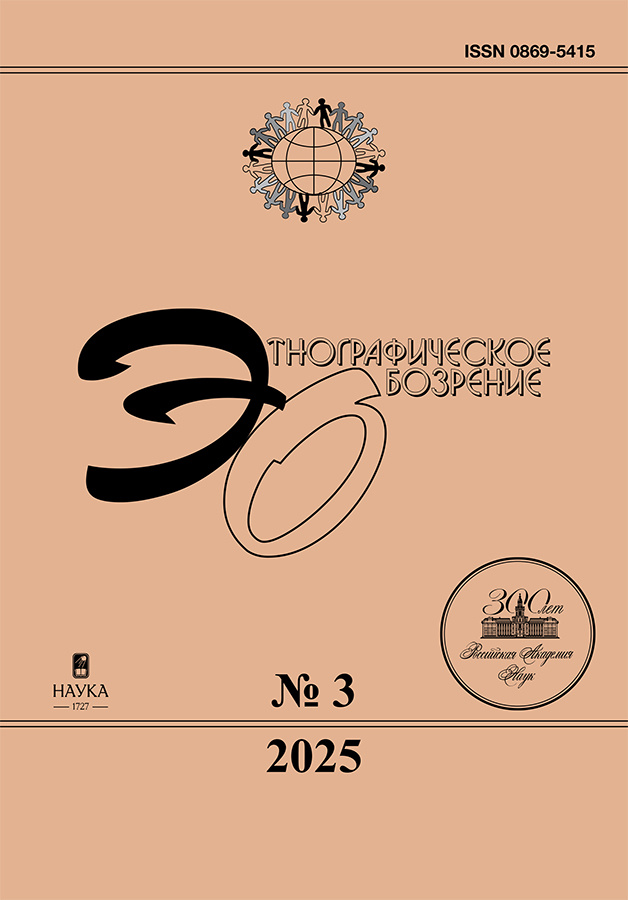Dream and sanctuary in traditional Armenian Christianity: pilot research outcomes
- Authors: Simonian L.D.1,2
-
Affiliations:
- Institute of Archaeology and Ethnography of NAN RA
- Yerevan State University
- Issue: No 1 (2024)
- Pages: 93-114
- Section: Folk Christianity in Armenia
- URL: https://cijournal.ru/0869-5415/article/view/672580
- DOI: https://doi.org/10.31857/S0869541524010056
- EDN: https://elibrary.ru/YGPHAM
- ID: 672580
Cite item
Abstract
Ethnographic research on dreams, conducted in the frame of the phenomenological approach and drawn on the comparison of field data and previous studies, points to the existence of patterns related to an ancient tradition. Nowadays, approaching dreams as information on future events is characteristic of people who are religious yet rarely attending the church. According to the traditional classification of the true and the false dreams, dreams about sacral places belong to the former; therefore, people meticulously follow their recommendations. It is through the dreams that communication between the dreamer and the personified saint occurs advising the dreamer to excavate certain places, avoid touching sacral objects, make a pilgrimage, take the object of cult to a new place, etc. Some dreams help discovering historical artefacts. There are special sanctuaries in Armenia that relieve of bad dreams, and they are often connected with the image of Tukh Manook. In the special sanctuaries, incubation aimed at healing is practiced. Dreams experienced in the sanctuary are still regarded as sacral even after visiting it, and usually they imply the recovery from illness.
Full Text
About the authors
Lilit D. Simonian
Institute of Archaeology and Ethnography of NAN RA; Yerevan State University
Author for correspondence.
Email: simonian_lilit@mail.ru
ORCID iD: 0000-0001-6618-359X
к. и. н., заведующий архивом, научный сотрудник
Armenia, 15 Charents Str., Yerevan, 0025; 1 Alek Manukyan Str., Yerevan, 0025References
- Avetisyan, L. 2016. Mastarayi srbateghinery ev dranc het kapvac avandakan patkeracumnery [Shrines of Mastara and Related Traditional Performances]. Ejmiadzin 6: 121–130.
- Cappozzo, V. 2012. Editions of the Somniale Danielis in Medieval and Humanist Literary Miscellanies. PhD diss., Department of Italian, Indiana University.
- Dillon, M. 1997. Pilgrims and Pilgrimage in Ancient Greece. London։ Psychology Press.
- Geertz, C. 2004. Interpretatsiia kul’tur [The Interpretation of Cultures]. Moscow: ROSSPEN.
- Jung, C.G. 1964. Man and His Symbols. New York: Ferguson Publishing.
- Harutyunyan, S. 2002. Surb Sargisy zhoghovrdakan banavor avandutyan mej [Saint Sargis in Oral Folk Tradition]. In Surb Sargis (gitazhoghovi nyuter) [Saint Sargis (Materials of Conference)], edited by S. Harutyunyan and A. Qalantaryan, 24–42. Yerevan: Gitutyun.
- Lincoln, J.S. 2003. The Dream in Native American and Other Primitive Cultures. New York: Dover.
- Marutyan, H. 2001. “Tan surb” erevuyty: akunqneri harcy ev merorya drsevorumnery [The Phenomenon of the “Home Saint”: The Question of Origins and Modern Manifestations]. In Hayoc srbery ev srbavayrery [Armenian Saints and Sanctuaries], edited by S. Harutyunyan and A. Qalantaryan, 337–346. Yerevan: Hayastan.
- Sahakyan, K., R. Hovhannisyan, and A. Hovsepyan. 2001. Astvacahaytnutyuny eraznerum [Epiphany in Dreams]. In Hayoc srbery ev srbavayrery [Armenian Saints and Sanctuaries], edited by S. Harutyunyan and A. Qalantaryan, 139–144. Yerevan: Hayastan.
- Simonian, L. 2013. Surb Grogor Narekatsu jołovrdakan pašamunqɘ [Folk Cult of St. Grigor Narekatsi]. Hay astvatsaban 5: 178–198.
- Simonian, L. 2015. Narodnyi kul’t Ovannesa Odzunskogo [Folk Cult of Hovhannes of Odzun]. In Strany i narody Vostoka [Countries and Peoples of the East], edited by I.F. Popova and T.D. Skrynnikova, XXXVI: 362–377. Moscow: Vostochnaia literatura.
- Simonian, L. 2022. Surb Hakob Mtsbna hayrapeti hishataky hayoc mej [The Memory of St. James of Nisibis among Armenians]. Yerevan: VMV-PRINT.
- Simonian L., Hakobyan H. 2020. Ter Huskan vordi S. Stepanos [Saint Stephanos Son of the Priest Husik]. Yerevan: Artagers.
Supplementary files













